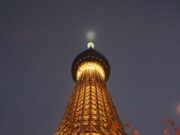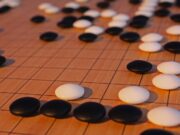These days it’s easy to resolve questions about paternity with over-the-counter test kits. Now, researchers have put DNA evidence together with long-term genealogical data to explore similar questions of biological fatherhood on a broad scale among people living in parts of Western Europe over the last 500 years.
The findings reported in Current Biology on November 14 yielded some surprises. While the number of so-called extra-pair paternity (EPP) events overall was (not surprisingly) fairly low, their frequency varied considerably among people depending on their circumstances. Specifically, evidence of EPP events turned up much more often in people of lower socioeconomic status who lived in densely populated cities in the 19th century.
“Of course, extra-pair paternity, especially due to adultery, is a popular topic in gossip, jokes, TV series, and literature,” said Maarten Larmuseau (@MHDLarmuseau) of KU Leuven and Histories, Belgium. “But scientific knowledge on this phenomenon is still highly limited, especially regarding the past.
“Our research shows that the chance of having extra-pair paternity events in your family history really depends on the social circumstances of your ancestors. If they lived in cities and were of the lower socioeconomic classes, the chances that there were EPP events in your family history are much higher than if they were farmers.”
Evolutionarily speaking, it’s clear that remaining faithful to one’s partner isn’t always the most advantageous strategy. Males may benefit from straying by siring extra offspring; females may benefit by mating with superior males. But in human societies over time, how often has EPP really happened?
In the new study, Larmuseau’s team took the first broad look at this question to find that social context really matters. Their study covered a time period of several centuries during which there were dramatic changes in the human social environment, including the rapid urbanization that accompanied the Industrial Revolution in 19th century Western Europe. To estimate historical EPP rates among married couples, they identified 513 pairs of contemporary adult males living in Belgium and the Netherlands who, based on genealogical evidence, shared a common paternal ancestor and therefore–barring an EPP event–should have carried the same Y chromosome.
The evidence showed no significant difference in EPP rates between countries despite key religious differences, they report. But they varied widely with socioeconomic status and population density. The EPP rate was much lower among farmers and more well-to-do craftsmen and merchants (about 1%) than among lower class laborers and weavers (about 4%).
EPP rates also rose with population density. Putting the two together, the researchers report that the estimated EPP rates for the families varied by more than one order of magnitude, from about 0.5% among the middle to high classes and farmers living in the most sparsely populated towns to almost 6% for the low socioeconomic classes living in the most densely populated cities.
The researchers say the findings support evolutionary theories suggesting that individual incentives and opportunities for seeking or preventing extra-pair mating should depend on the social context. They also debunk the notion that EPP rates in Western society are generally high, they say, noting that the evidence puts average rates at around 1%.
Larmuseau says an interdisciplinary perspective will be important to understanding why certain factors like population density and socio-economic status have had such a strong influence on the EPP rate. “This is highly relevant because the causes of historical EPP events are hidden and diverse,” he said.


































